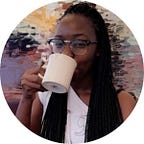I’m not sure when I first officially learned what being gay was (though something tells me it was probably through chat rooms) but by 8th grade, I was grabbing every LGBT themed book I could find. Rainbow Boys, Boy Meets Boy, Ash, which I must have read six times once I found it because finally a book with girls. The more I read, the more I needed to be connected to this community that I swore I was just an ally to.
Through the media I consumed, I rarely saw queer girls and, if I did, they definitely were never Black. Early in high school something had switched. There was a group of more masculine Black girls said to be dating other girls and as their collective relationship drama became part of the rumor mill, the conversations in my friend group changed. We shared our self-questioning with each other and I was realizing that my connection to the LGBT community was deeper than ally ship.
But I still wasn’t seeing many queer Black girls. Other than that group and Maya from Pretty Little Liars (girl, I know) I didn’t have much. My budding queerness existed separate from my blackness. I couldn’t perform both in the way I was seeing others do, so I placed the different pieces of my identity far away from each other.
The summer I turned 18 I went to my first Pride parade. The widest array of genuine representations of the LGBT community, outside of media, were what I saw during Pride. It was liberating. But that “liberation” was limited and overwhelmingly white.
I grew up in the DMV where, between DC and Baltimore, National Pride is the bigger, more often advertised event. Despite taking place in Chocolate City, National Pride has a film of gentrification and corporate sponsorship. It can be a fun day in the city, but it was nothing compared to my time at Baltimore Pride. At Baltimore Pride the music was better, there was tons of food and, most importantly, the celebration was overwhelmingly Black.
Finding genuine community spaces to thrive and exist was becoming more important to me than media representation. More than just seeing people, being within a community was enriching and healing. It’s not that these spaces didn’t exist during National Pride but that at Baltimore Pride, the whole event was the space. I didn’t have to search as hard to find black people. Not feeling like an outlier in a space meant to be welcoming and inclusive had a greater impact than free beads or people sharing face paint and glitter.
I was thrilled to be twerking, while eating a blooming onion, in the middle of a Pride celebration that felt more culturally accessible. Then it was time to go home and, in the everyday, I went back to keeping the pieces of me separate. Outside of the joy of celebration, I was still searching for how I was supposed to exist. I thought how I presented my sexual identity had to mesh with my Blackness in a way that was prescribed and accepted by the Great Board of Black Queers, Inc. and spiraled into a new set of identity related insecurities. Identifying more ways to categorize myself grew stressful.
I thought that being out meant that my sexuality had to be just as obvious as my race. But I wasn’t the “right” mix of Black and queer and trust that I tried hard to find what that was and how I could make it work. It wasn’t until my first same gender relationship that I stopped performing. I stopped all elaborate attempts to make my identities blend together in a way that would openly mark me.
There is no right way to be Black and queer. There is what’s visible which, when desperate for guidance and community, can seem like a whole new set of restrictions. I wasn’t fitting neatly into any prescribed archetypes but I was in this hidden relationship that was pushing me to be honest. The relationship existed whether people knew or not and the looming stress of navigating that mirrored my struggle with my sexuality.
I can not separate my queerness from the way I interact with the world. Regardless of what people see when they look at me, my sexuality still exists. Seeing an evolving diversity of queer Black representation has been and always will be important but so is the knowledge that my sexuality doesn’t have to be visible to be valid. I am Black. I am queer. And both are crucial to how I navigate in and through different spaces. I spent years trying to show this to the world only to find that the best way to actualize my identity markers is to live authentically.
There is no mold that fits comfortably. I’m here to make my own space.
